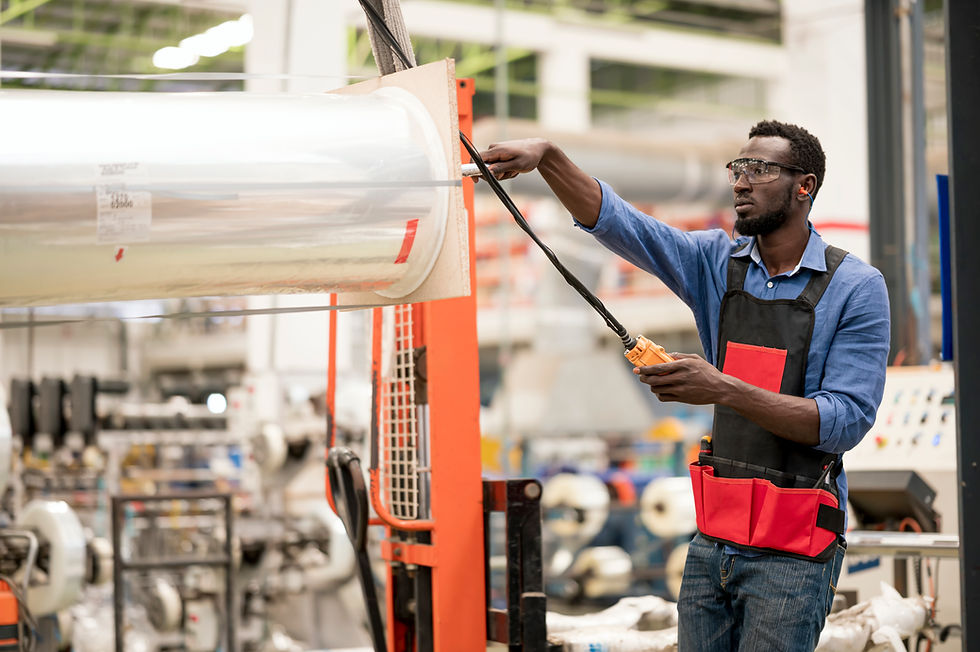The Plastic Industries: Other Items to Replace Plastic Effects on the Earth
- Seaside IT
- Jan 18, 2023
- 3 min read

The plastic industry is one of the largest manufacturing industries in the U.S. and has a gross income of four hundred and fifty-one billion dollars per year. While it is an industry that provides a large number of jobs, it does not negate the fact that the items that are being produced along with shipped, which is causing more carbon emissions on the earth’s footprint, brings the total amount of harm to a higher level than we like to be conscious about.
Plastic is notoriously known for not being recyclable which leads to a larger stockpile of thrown away items within our oceans at trash dumps which puts the micro-plastics resin back into the water creating an extremely harmful cycle that has a slim chance of being stopped because a majority of plastic items cannot be recycled. That does not negate the fact that there are some items that can be recycled, such as: Polyethylene Terephthalate, which is found within water bottles and soda bottles, however it is key to note this material does contain elevated levels of chemicals and runs the risk of holding bacteria growth.
High-Density Polyethylene which is found in common household items such as detergent containers, milk jugs and oil bottles. Polyethylene is one of the plastic items that is fully recyclable with a smaller impact compared to other plastic items. Low-Density Polyethylene is another plastic which can be found in items such as plastic bags, but while most places do not recycle this plastic they can be reused and safe to repurpose. Polypropylene is the last plastic item that can be considered safe however this item is usually not recyclable but instead is safe to reuse, found within items such as chip bags, yogurt containers and cereal bags.
While those items are safe to reuse, many of them are not recyclable. Which brings into question which items can we use that are instead recyclable and safe as a majority to repurpose? This would include using stainless steel, glass, platinum silicone without plastic filters, beeswax coated-cloth, wood, bamboo, natural fiber cloth, paper, and cardboard.
Nevertheless, even within items such as these it is key to note some may be better than others from a sustainability standpoint. For example, glass can be a good material, but we must pay attention to the high carbon emissions rate for transportation around the globe. Bamboo can be a particularly good material, but the issues come into play with the chemicals that are used with such a material within factories. Bamboo can also become an unsure situation with regards to fibers such as melamine and formaldehyde resin which can fall apart down to the chemical basis within elevated temperature items such as microwaves, dishwashers, and hot liquids. Paper and cardboard are another good case but when taking into consideration the transportation effect that leads to a larger carbon footprint need to be considered.
Items that are being considered as the most sustainable alternatives to plastic are being found within new natural alternative packaging. They are mushroom packaging, which is a compostable alternative, seaweed-based packaging, pressed hay being used as egg cartons and banana leaves which is being moved strongly as a plastic free alternative.
References:
Almanac. “Which Plastics Are Recyclable by Number?” Almanac.com, Yankee Publishing, Inc., 22 Apr. 2022, https://www.almanac.com/which-plastics-are-recyclable-number/.
“Alternatives to Plastic.” Welcome to Action on Plastic -, 18 Apr. 2021, https://www.actiononplastic.org/alternatives-to-plastic/.
“The Best Eco-Friendly Alternatives for the Plastic in Your Life.” Eartheasy Guides & Articles, https://learn.eartheasy.com/guides/the-best-eco-friendly-alternatives-for-the-plastic-in-your-life/.
Kramer, Autumn. “Size and Impact: What Plastics Contributes to the Economy.” This Is Plastics, 16 June 2021, https://thisisplastics.com/economics/size-and-impact-what-plastics-contributes-to-the-economy/.


